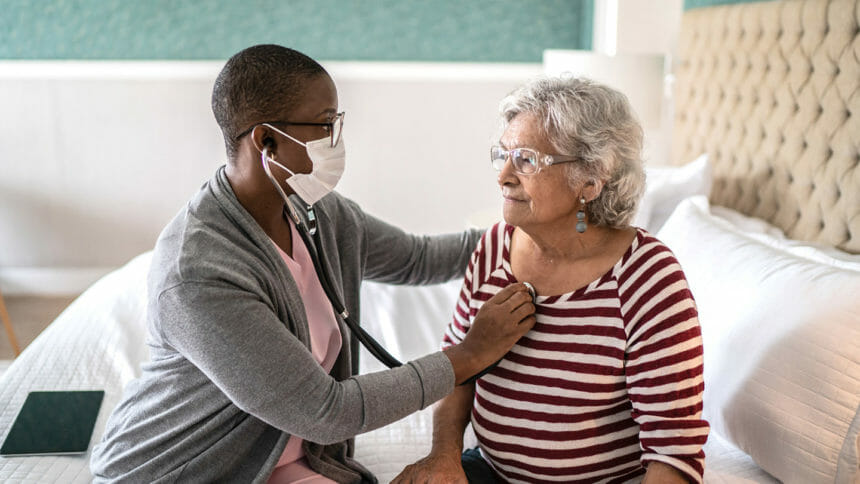
There is a lot of growth potential with skilled nursing facility (SNF)-at-home, experts who participate in this model said this week. Some of the secrets to success are strong partnerships, well-trained staff and smart technological solutions.
“You need to have a truly collaborative partner,” said Natalie Pagoria, M.D., chief medical officer with AccentCare, who spoke at a SNF-at-home session on Tuesday at the Home Care Innovation and Investment Conference in Chicago. SNF-at-home has been a natural progression for AccentCare, which began caring for acute care patients in the home years ago, she said. It currently partners with hospitals on the effort; SNFs are secondary partners.
Healing Hands Healthcare partners with SNFs, the firm’s biggest referral source, on SNF-at-home, said its CEO and co-founder, Summer Napier. The firm makes a point of trying to fill in the gaps for SNFs — offering to assist with transitional care management, for example — so they don’t see Healing Hands as a competitor trying to take business.
“Keeping that in mind is key,” she noted.
Critical to the model is coverage, Pagoria said. Like a brick-and-mortar SNF, the SNF-at-home program has to operate 24 hours, seven days a week. The effort must emphasize size, scale and depth of resources, Pagoria explained. It’s important to have more than one partner and vendor, and there must be caregivers, therapists and a wealth of other staff at the ready.
Technology is another important piece of the puzzle, Pagoria said. The technology must be meaningful and not disruptive to the care available. It also must be scalable “so we can change the trajectory of risk,” she added.
Jackleen Samuel’s company, Resilient Healthcare, which has a SNF-at-home program, has focused on technological integration. When it launched a rural healthcare initiative, it leveraged home health agencies in every town.
“A lot of it is coordinating care appropriately,” said Samuel, Resilient Healthcare co-founder and CEO. She added that fine-tuning reimbursement is also important.
Proving the value of SNF-at-home with payers is another necessary task, the panelists said. That comes down to gathering data. Even a rudimentary spreadsheet showing basic facts on mortality rates, functional scores at discharge and other metrics, makes a difference, Napier said.
“It doesn’t have to be difficult; it just has to be tangible,” said Napier, who said her company was able to prove that ER rehospitalizations fell 2% with SNF-at-home services.
While the panelists were cautiously optimistic federal SNF-at-home legislation will pass, in case it fails, Samuel said providers have to be creative about how they offer SNF-at-home. She hopes the model will continue to gain traction.
“I’m hoping a year from now, patients know this exists for them,” she said, adding, “If you knew about it, you might reach out and ask for it.”


